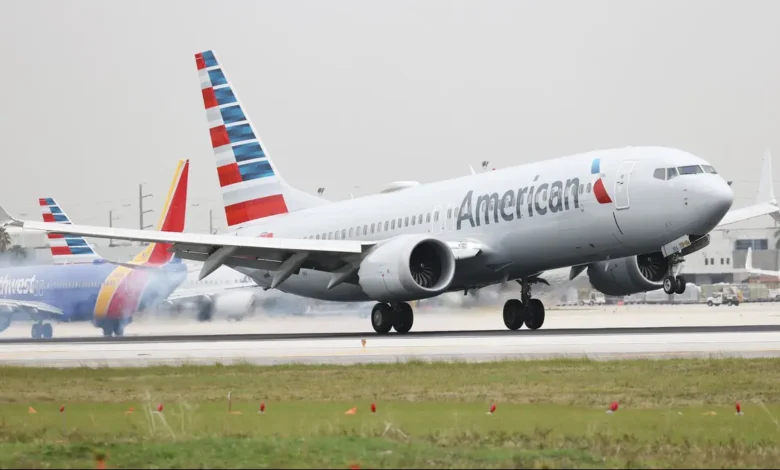Airline Hub News: The Backbone of Global Aviation and Industry Developments

Introduction Airline hubs are more than just busy airports—they are vital centers of air traffic, facilitating connections between cities, regions, and continents. In the ever-evolving aviation industry, the concept of an airline hub plays a significant role in shaping travel routes, flight schedules, and even economic trends. This article delves into the latest updates surrounding airline hubs, exploring their importance, evolution, and how they impact the aviation world.
Understanding Airline Hubs and Their Importance
Airline hubs are strategically located airports that serve as central points for an airline’s operations. These hubs allow airlines to efficiently connect passengers from various cities with flights to international destinations, creating a seamless network. In essence, they are the heart of the airline’s infrastructure.
The Function of a Hub in Air Travel
Airlines utilize hubs to consolidate flights, offering multiple connections to a wide range of destinations. Without hubs, passengers might have to take multiple flights or endure longer travel times, which would make air travel less efficient. The hub-and-spoke system enables airlines to maximize their flight schedules while reducing costs, thus making it easier for passengers to find affordable travel options.
Moreover, hubs serve as the central operational base for airlines, housing maintenance facilities, training centers, cargo services, and more. This centralization ensures airlines can maintain a consistent, reliable service for their customers.
Hub Cities and Airline Domination
Major airline hubs are typically located in large, well-connected cities. For example, Atlanta is home to Delta Airlines’ largest hub, while United Airlines operates primarily out of Chicago O’Hare. These cities often have a high volume of international and domestic traffic, enabling airlines to capitalize on both short- and long-haul routes. As such, these hubs become crucial in determining an airline’s market share in particular regions or globally.
An airline’s dominance in a specific hub city can lead to benefits like better flight frequency, exclusive service routes, and higher priority for slot allocations at busy airports. This can give an airline a competitive edge, ensuring a high level of service for their passengers and strengthening brand loyalty.
Economic Impact of Airline Hubs
Airline hubs have far-reaching economic effects on the cities in which they are located. A major airport hub supports jobs in various sectors, including airline staff, ground services, airport management, logistics, and more. The economic benefits extend beyond the airport itself, contributing to local businesses, tourism, and international trade. For instance, when a hub city receives a new direct flight route, it can lead to increased tourism and business opportunities, spurring the local economy.
Top Airline Hubs Around the World: A Global Perspective
While every continent boasts its collection of key airline hubs, some stand out due to their strategic location, traffic volume, and airline dominance. This section will highlight some of the top airline hubs worldwide and discuss the unique role each one plays in the global aviation network.
2.1. Atlanta (Hartsfield-Jackson Atlanta International Airport)
For many years, Atlanta’s Hartsfield-Jackson International Airport has consistently ranked as the world’s busiest airport, based on passenger traffic. Home to Delta Airlines, the hub sees a staggering number of domestic and international flights, making it a key player in the aviation industry.
Delta’s extensive operations at this hub allow for numerous daily flights to destinations across the United States and around the world. The efficiency of this airport’s layout and its wide range of flight options make it one of the most convenient places to connect between cities, contributing to its status as the crown jewel of airline hubs.
2.2. London Heathrow (Heathrow Airport)
Heathrow Airport in London serves as a critical gateway for flights traveling in and out of Europe. Known for its heavy international traffic, Heathrow is one of the busiest airports in the world. It serves as the primary European hub for British Airways and hosts a variety of other airlines that operate transatlantic flights.
Due to its strategic location between Europe and North America, Heathrow is a dominant force in global air travel, offering countless options for both business and leisure travelers. In addition to its size, Heathrow’s modern facilities and capacity for long-haul flights make it a vital piece of the airline hub network.
2.3. Singapore Changi (Changi Airport)
Known for its world-class facilities and service, Singapore’s Changi Airport is often considered one of the best airports in the world. Serving as the primary hub for Singapore Airlines, Changi facilitates a wide range of international routes, connecting Asia with Europe, North America, and Oceania.
Changi’s impressive range of amenities, including lush gardens, world-class shopping, and multiple dining options, ensures that travelers passing through the airport have a pleasant and memorable experience. Moreover, its role in Singapore’s aviation industry has helped elevate the city-state as a key business and tourism destination.
2.4. Dubai International Airport
Dubai International Airport (DXB) is another major airline hub that has experienced tremendous growth over the years. Serving as the base for Emirates Airlines, DXB plays an integral role in connecting the East and West, with flights to regions such as Europe, Africa, Asia, and Oceania. Dubai’s strategic location between Europe and Asia makes it an essential link in the global aviation chain.
DXB’s status as a major international hub is driven by Emirates’ extensive network of routes and the airport’s efficient, modern facilities. With state-of-the-art terminals and luxurious services, Dubai International Airport provides a seamless transit experience for millions of passengers each year.
Evolution of Airline Hubs: How They’ve Changed Over Time
Over the decades, the concept of airline hubs has evolved significantly. The rise of low-cost carriers, changes in global demand, and advancements in technology have all contributed to the transformation of how airlines and airports operate.
3.1. The Early Days: Hub-and-Spoke System Emergence
In the early years of commercial aviation, the airline industry relied on a point-to-point flight system, where passengers would travel directly from one city to another. However, this method often led to inefficiencies and higher operating costs. The hub-and-spoke system emerged as a solution to these challenges, centralizing flights through a key airport and connecting passengers to multiple destinations.
By consolidating flights into major hubs, airlines were able to reduce costs, streamline operations, and offer more convenient connections. This model quickly became the standard for most legacy carriers and is still widely used today.
3.2. The Rise of Low-Cost Carriers (LCCs) and the Impact on Hubs
The introduction of low-cost carriers like Southwest Airlines and Ryanair marked a shift in the airline industry. These carriers typically bypassed the traditional hub-and-spoke system, opting for a more direct point-to-point flight model. This innovation allowed for lower operating costs and more affordable ticket prices, leading to an explosion of new travelers.
However, low-cost carriers have not completely replaced the hub system. Many LCCs still operate from regional airports, which allows them to take advantage of lower fees and avoid the congestion found in major hubs. While the LCC model has certainly disrupted the aviation landscape, traditional hub cities remain integral for long-haul international travel.
3.3. Technological Advancements and the Future of Airline Hubs
The rapid development of technology is playing a key role in reshaping airline hubs. Innovations in flight tracking, passenger management systems, and airport security are making the hub experience more efficient for both passengers and airlines. Additionally, advanced digital tools are helping airlines optimize flight schedules and routes to better serve travelers.
Looking ahead, airport hubs may see even further changes with the potential integration of automated systems, including self-check-in kiosks, facial recognition technology, and AI-powered customer service. These technologies will continue to enhance the passenger experience and improve overall airport operations.
Challenges Facing Airline Hubs Today
Despite their importance, airline hubs face various challenges in the modern aviation industry. From congestion and environmental concerns to the impact of global events, these hubs must adapt to changing circumstances to remain viable.
4.1. Congestion and Capacity Limitations
As global air travel continues to grow, many of the world’s busiest airports are running out of space. Airports like Los Angeles International, London Heathrow, and Tokyo Narita have been dealing with congestion for years, leading to longer waiting times, delays, and flight cancellations.
The lack of available slots for new flights is a major issue for airlines looking to expand their operations at these hubs. As such, airport authorities are forced to invest in infrastructure projects, such as new runways, terminals, and air traffic control systems, to handle the increasing volume of air traffic.
4.2. Environmental Concerns and Sustainability Efforts
Environmental sustainability is a growing concern for the aviation industry, and hub airports are no exception. The aviation sector is responsible for a significant portion of global greenhouse gas emissions, and many airlines are being pressured to reduce their carbon footprint.
In response, airports and airlines are investing in greener technologies and sustainability initiatives. From implementing renewable energy sources to reducing aircraft emissions, the push for sustainability is reshaping the future of airline hubs. In some cases, airports are even redesigning their terminals to be more energy-efficient and eco-friendly.
4.3. Impact of Global Events (Pandemics, Geopolitical Issues)
Global events, such as the COVID-19 pandemic, have had a profound impact on airline hubs. The pandemic resulted in a dramatic drop in international travel, with many airports seeing unprecedented declines in passenger traffic. In addition to the financial toll, airports and airlines faced unprecedented challenges in maintaining safety protocols and navigating travel restrictions.
Geopolitical tensions, natural disasters, and other global crises also affect airline hubs. These events can disrupt travel schedules, affect demand, and create uncertainties for airlines and passengers alike.
Conclusion
Airline hubs remain the backbone of the global aviation industry, offering essential connectivity and efficiency for both airlines and passengers. Despite the challenges they face, these hubs continue to evolve, with new technologies, sustainability efforts, and operational changes driving the future of air travel. From the bustling runways of Atlanta to the state-of-the-art terminals of Singapore Changi, airline hubs are the pulse of global aviation.
As the world recovers from past disruptions and embraces innovations, we can expect airline hubs to remain central to the functioning of the global aviation system. Whether you’re a frequent flyer or simply interested in the dynamics of air travel, keeping an eye on the latest airline hub news is essential for understanding how the future of aviation will unfold.





